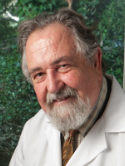Imaging TCR-dependent NFAT-mediated T-cell activation with positron emission tomography in vivo Journal Article
| Authors: | Ponomarev, V.; Doubrovin, M.; Lyddane, C.; Beresten, T.; Balatoni, J.; Bornmann, W.; Finn, R.; Akhurst, T.; Larson, S.; Blasberg, R.; Sadelain, M.; Tjuvajev, J. G. |
| Article Title: | Imaging TCR-dependent NFAT-mediated T-cell activation with positron emission tomography in vivo |
| Abstract: | A noninvasive method for molecular imaging of T-cell activity in vivo would be of considerable value. It would aid in understanding the role of specific genes and signal transduction pathways in the course of normal and pathologic immune responses, and could elucidate temporal dynamics and immune regulation at different stages of disease and following therapy. We developed and assessed a novel method for monitoring the T-cell receptor (TCR)-dependent nuclear factor of activated T cells (NFAT)-mediated activation of T cells by optical fluorescence imaging (OFI) and positron emission tomography (PET). The herpes simplex virus type 1 thymidine kinase/green fluorescent protein [HSV1-tk/GFP (TKGFP)] dual reporter gene was used to monitor NFAT-mediated transcriptional activation in human Jurkat cells. A recombinant retrovirus bearing the NFAT-TKGFP reporter system was constructed in which the TKGFP reporter gene was placed under control of an artificial cis-acting NFAT-specific enhancer. Transduced Jurkat cells were used to establish subcutaneous infiltrates in nude rats. We demonstrated that noninvasive OFI and nuclear imaging of T-cell activation is feasible using the NFAT-TKGFP reporter system. PET imaging with [124I]FIAU using the NFAT-TKGFP reporter system is sufficiently sensitive to detect T-cell activation in vivo. PET images were confirmed by independent measurements of T-cell activation (e.g., CD69) and induction of GFP fluorescence. PET imaging of TCR-induced NFAT-dependent transcriptional activity may be useful in the assessment of T cell responses, T-cell-based adoptive therapies, vaccination strategies and immunosuppressive drugs. |
| Keywords: | signal transduction; unclassified drug; dna-binding proteins; disease course; flow cytometry; positron emission tomography; sensitivity and specificity; animals; mice; interleukin 2; image analysis; transcription initiation; neoplasm proteins; green fluorescent protein; molecular dynamics; transcription, genetic; molecular imaging; transfection; immunoregulation; luminescent proteins; transcription factors; nuclear proteins; t lymphocyte receptor; lymphocyte activation; immune response; recombinant fusion proteins; nude mouse; receptors, antigen, t-cell; feasibility studies; vaccination; green fluorescent proteins; cytokine production; thymidine kinase; genes, reporter; rats; rats, nude; virus recombinant; molecular biology; pet; injections, subcutaneous; t lymphocyte activation; retrovirus; interleukin-2; jurkat cells; tomography, emission-computed; t-cell activation; fluorometry; enhancer region; fiau; enhancer elements (genetics); promoter regions (genetics); nfatc transcription factors; humans; priority journal; article; herpes virus type 1 thymidine kinase; t lymphocyte receptor dependent nuclear factor of activated t cell |
| Journal Title: | NeoPlasia |
| Volume: | 3 |
| Issue: | 6 |
| ISSN: | 1522-8002 |
| Publisher: | Elsevier Science Inc. |
| Date Published: | 2001-01-01 |
| Start Page: | 480 |
| End Page: | 488 |
| Language: | English |
| DOI: | 10.1038/sj.neo.7900204 |
| PUBMED: | 11774030 |
| PROVIDER: | scopus |
| PMCID: | PMC1506564 |
| DOI/URL: | |
| Notes: | Export Date: 21 May 2015 -- Source: Scopus |








